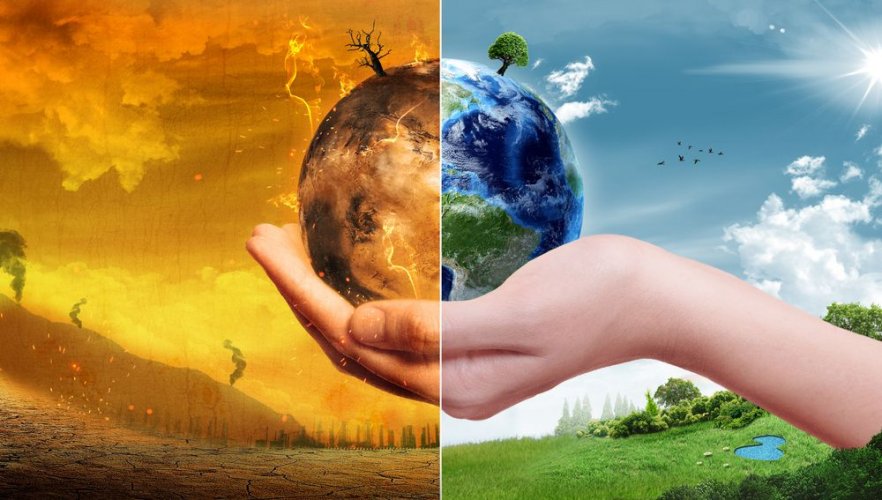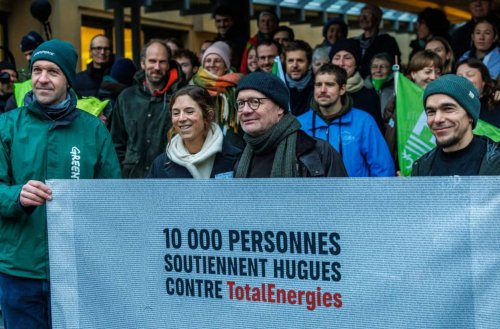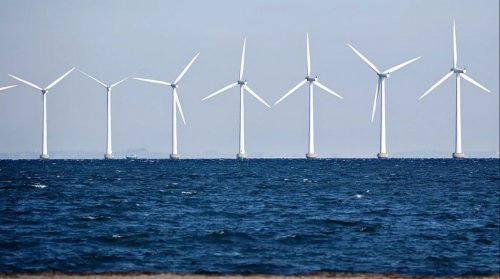The year 2024 is likely to break the global temperature record again, driven by the continued growth of fossil fuel use in the world.
World leaders, climate experts and activists began discussing the climate crisis on Monday, November 11, at the 29th UN Conference of the Parties to the Climate Change (COP29).
Euronews has visualized the categories and figures that will be in the center of attention in the form of diagrams.
1. The first thing that analysts noted was that the number of observers participating in climate negotiations has generally increased since COP21, the year the Paris Agreement was adopted:
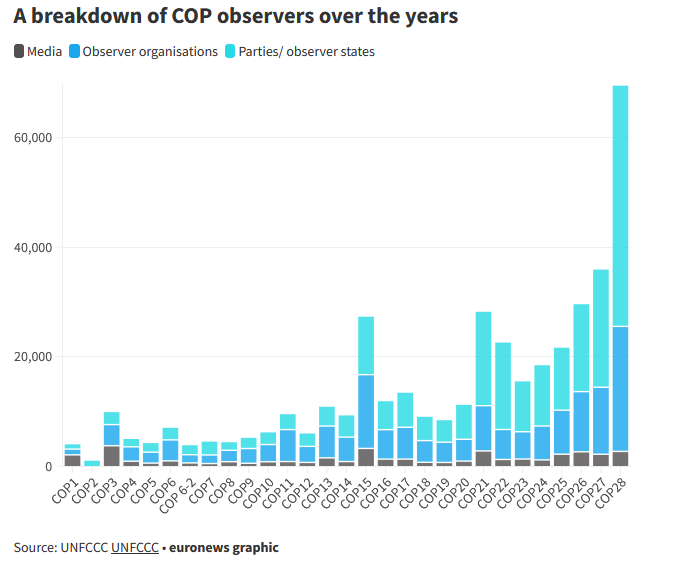
2. According to preliminary estimates, 2024 will almost certainly break the record set by 2023 and become the hottest year on record.
The European climate agency Copernicus reported last week that for the first time this year global warming has reached more than 1.5 ° C compared to the average indicator of the pre-industrial period.
The global surface air temperature in 2024 fluctuated as follows:
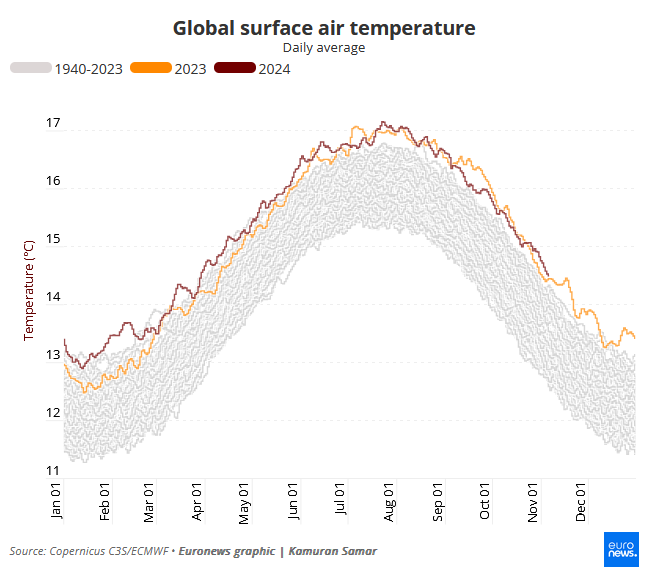
Source: euronews.com.
3. The European Union, along with the United States and Great Britain, have reduced greenhouse gas emissions by about a third since 1990. Despite this, according to UN data, global CO2 emissions are steadily increasing:
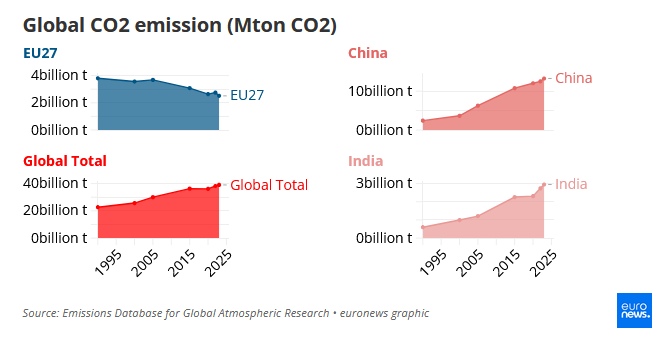
Source: euronews.com.
4. China, the USA and India are the biggest polluters by mass of CO2 emissions, but the countries of the Arabian Peninsula lead in emissions per capita. According to the European Union, Qatar has the highest emissions per capita, followed by Kuwait, Bahrain and Saudi Arabia:
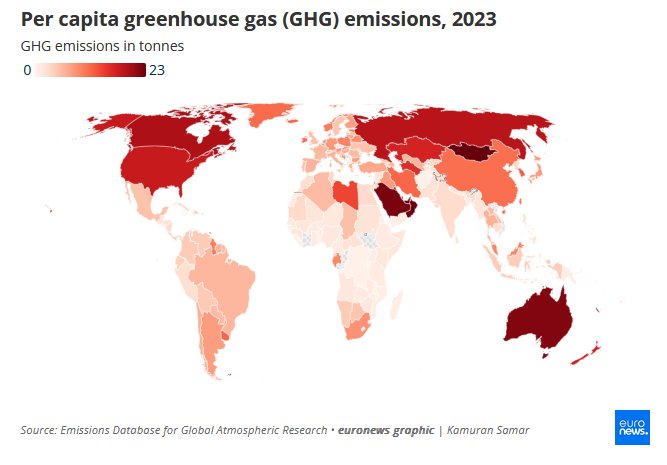
Source: euronews.com.
5. Last year, the EU reduced its greenhouse gas emissions by 34% compared to 1990 levels. However, the goal of climate neutrality by 2050 is still a long way off. Which countries were able to reduce CO2 emissions, and which – on the contrary – increased them, see the diagram:
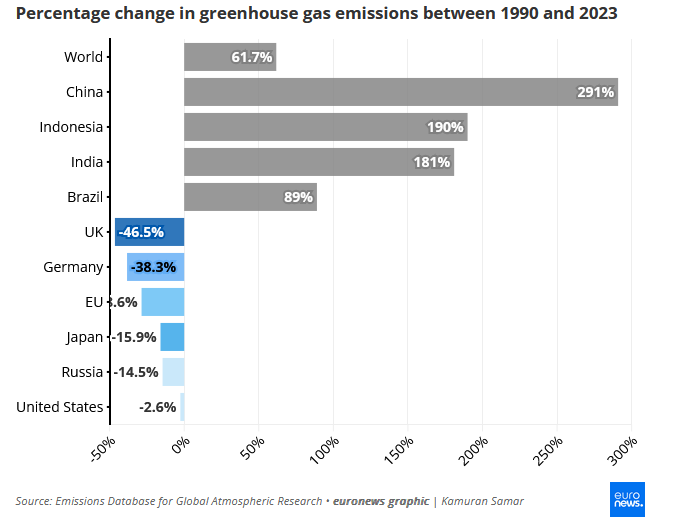
Source: euronews.com.
6. Analysts stated that in 2023, greenhouse gas emissions decreased in every sector of the EU compared to the previous year.
The largest decline was observed in the energy sector – 20.1%, followed by the industrial combustion and processes sector, where emissions decreased by 8.1%:
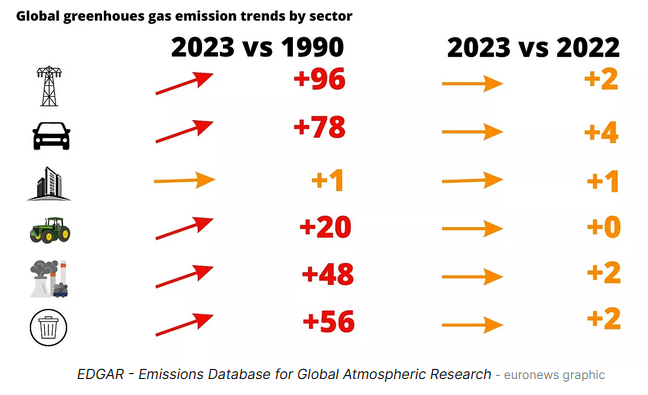
Source: euronews.com.
7. Very interesting were the graphs regarding the sources from which different countries of the world receive energy. Fossil fuels remain dominant in most countries, although there has been a marked increase in the use of renewable energy around the world, especially in regions such as Europe, the United States and China. According to the data of the European Commission, in the first half of this year, half of the electricity in the EU was obtained from RES:
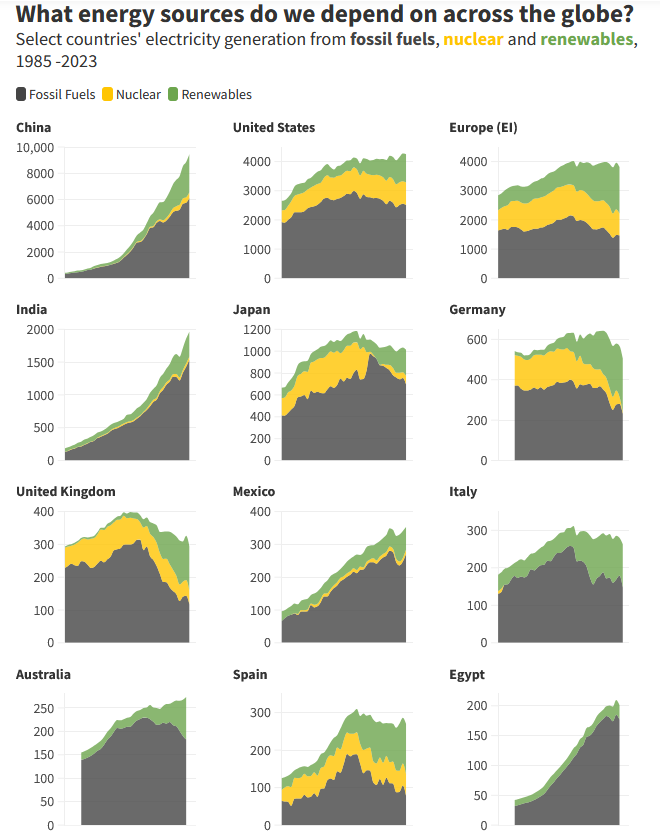
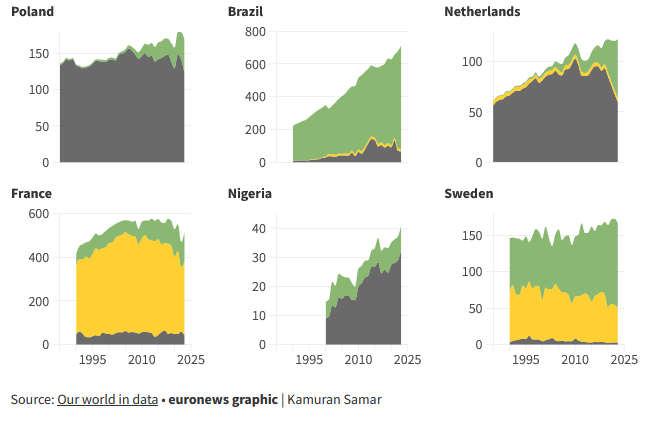
Source: euronews.com.
8. In 2023, the Intergovernmental Panel on Climate Change, the leading international body for climate change assessment, outlined 5 potential scenarios for modeling global temperature changes by 2100 based on various factors such as population growth and CO2 emissions.
The most promising scenario, SSP1-1.9, predicts an increase of only 1.4°C. It can only be achieved by significantly reducing emissions.
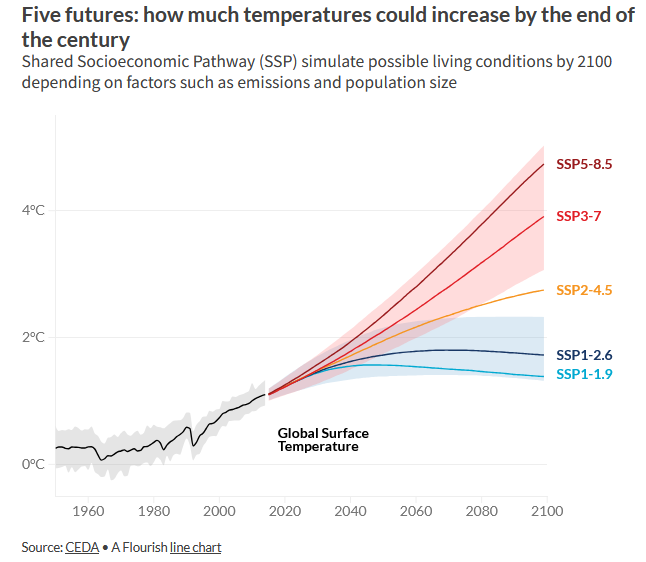
Source: euronews.com.
On the contrary, if greenhouse gas emissions remain at current levels and net zero is not achieved by 2100, global temperatures could rise by more than 2°C, as predicted by SSP2-4.5.
Earlier, EcoPolitic demonstrated what Ukraine's pavilion looks like at COP29.

